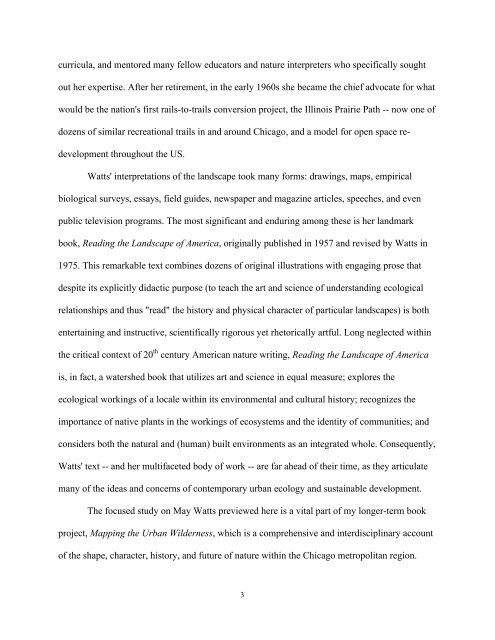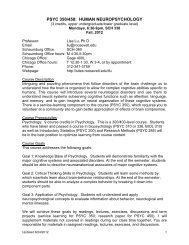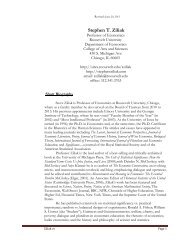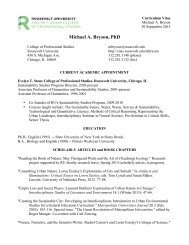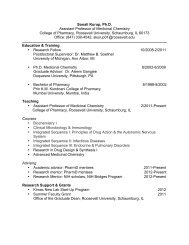Reading the Book of Nature
Reading the Book of Nature - Roosevelt University Sites
Reading the Book of Nature - Roosevelt University Sites
Create successful ePaper yourself
Turn your PDF publications into a flip-book with our unique Google optimized e-Paper software.
curricula, and mentored many fellow educators and nature interpreters who specifically sought<br />
out her expertise. After her retirement, in <strong>the</strong> early 1960s she became <strong>the</strong> chief advocate for what<br />
would be <strong>the</strong> nation's first rails-to-trails conversion project, <strong>the</strong> Illinois Prairie Path -- now one <strong>of</strong><br />
dozens <strong>of</strong> similar recreational trails in and around Chicago, and a model for open space redevelopment<br />
throughout <strong>the</strong> US.<br />
Watts' interpretations <strong>of</strong> <strong>the</strong> landscape took many forms: drawings, maps, empirical<br />
biological surveys, essays, field guides, newspaper and magazine articles, speeches, and even<br />
public television programs. The most significant and enduring among <strong>the</strong>se is her landmark<br />
book, <strong>Reading</strong> <strong>the</strong> Landscape <strong>of</strong> America, originally published in 1957 and revised by Watts in<br />
1975. This remarkable text combines dozens <strong>of</strong> original illustrations with engaging prose that<br />
despite its explicitly didactic purpose (to teach <strong>the</strong> art and science <strong>of</strong> understanding ecological<br />
relationships and thus "read" <strong>the</strong> history and physical character <strong>of</strong> particular landscapes) is both<br />
entertaining and instructive, scientifically rigorous yet rhetorically artful. Long neglected within<br />
<strong>the</strong> critical context <strong>of</strong> 20 th century American nature writing, <strong>Reading</strong> <strong>the</strong> Landscape <strong>of</strong> America<br />
is, in fact, a watershed book that utilizes art and science in equal measure; explores <strong>the</strong><br />
ecological workings <strong>of</strong> a locale within its environmental and cultural history; recognizes <strong>the</strong><br />
importance <strong>of</strong> native plants in <strong>the</strong> workings <strong>of</strong> ecosystems and <strong>the</strong> identity <strong>of</strong> communities; and<br />
considers both <strong>the</strong> natural and (human) built environments as an integrated whole. Consequently,<br />
Watts' text -- and her multifaceted body <strong>of</strong> work -- are far ahead <strong>of</strong> <strong>the</strong>ir time, as <strong>the</strong>y articulate<br />
many <strong>of</strong> <strong>the</strong> ideas and concerns <strong>of</strong> contemporary urban ecology and sustainable development.<br />
The focused study on May Watts previewed here is a vital part <strong>of</strong> my longer-term book<br />
project, Mapping <strong>the</strong> Urban Wilderness, which is a comprehensive and interdisciplinary account<br />
<strong>of</strong> <strong>the</strong> shape, character, history, and future <strong>of</strong> nature within <strong>the</strong> Chicago metropolitan region.<br />
3


